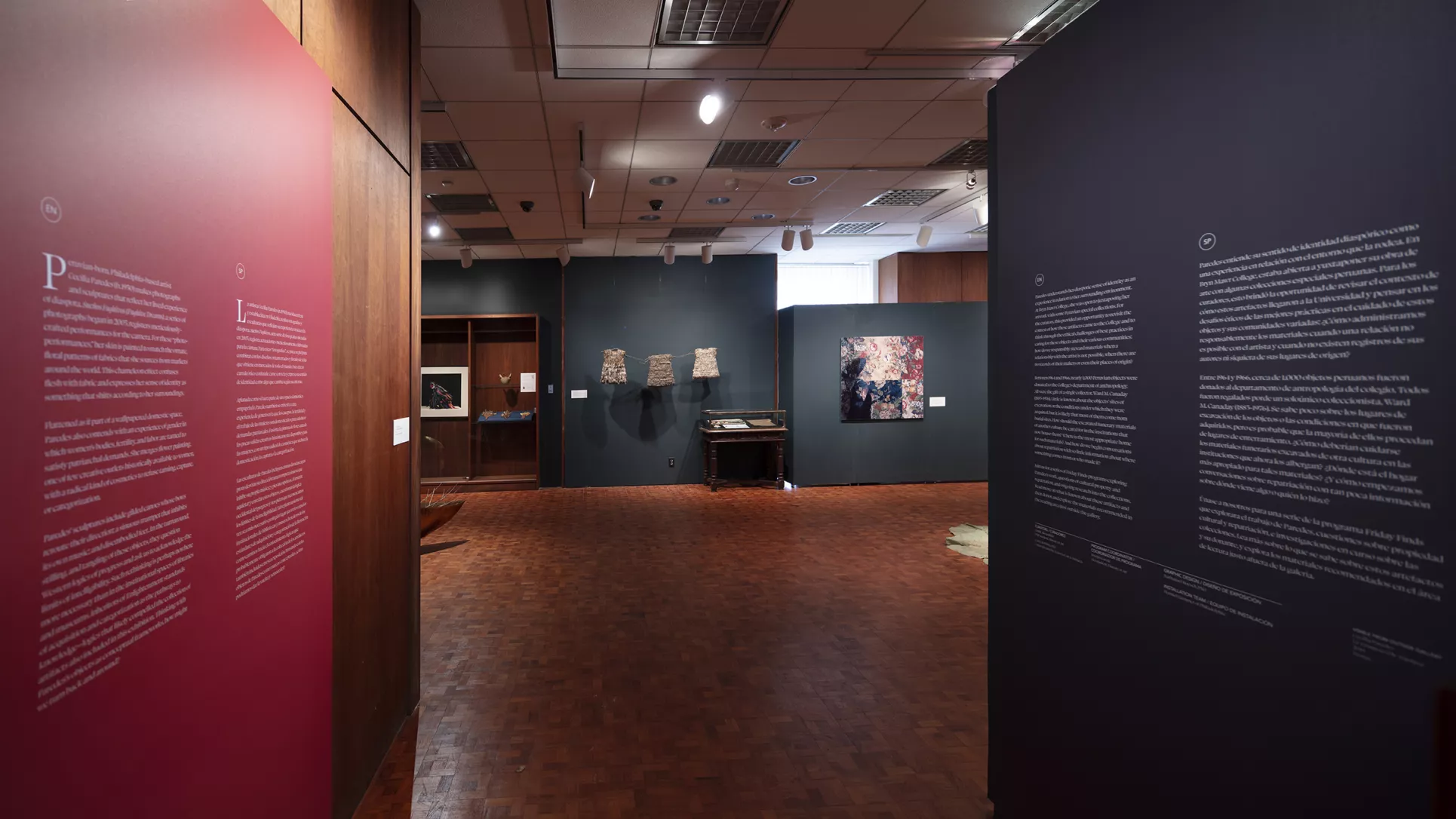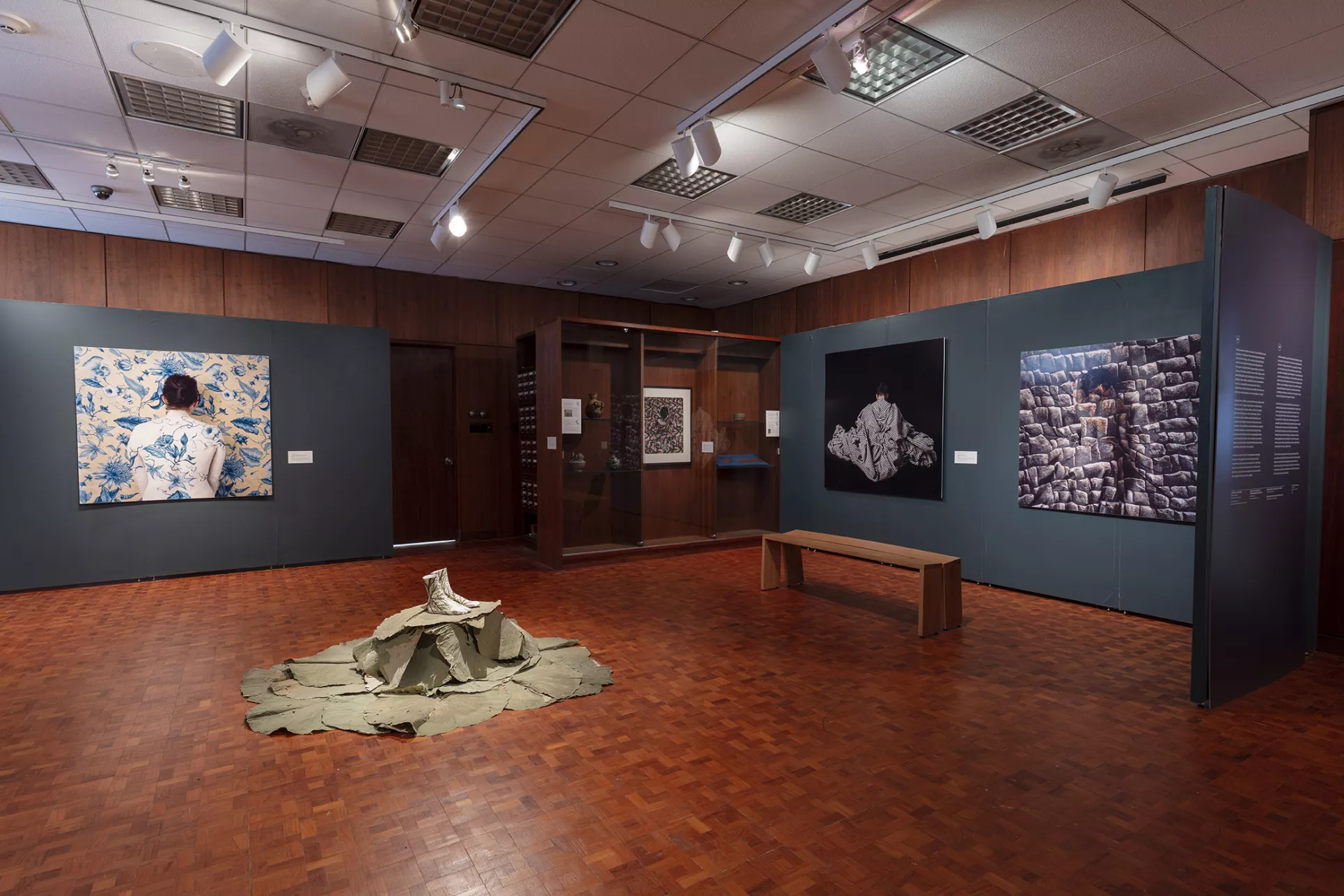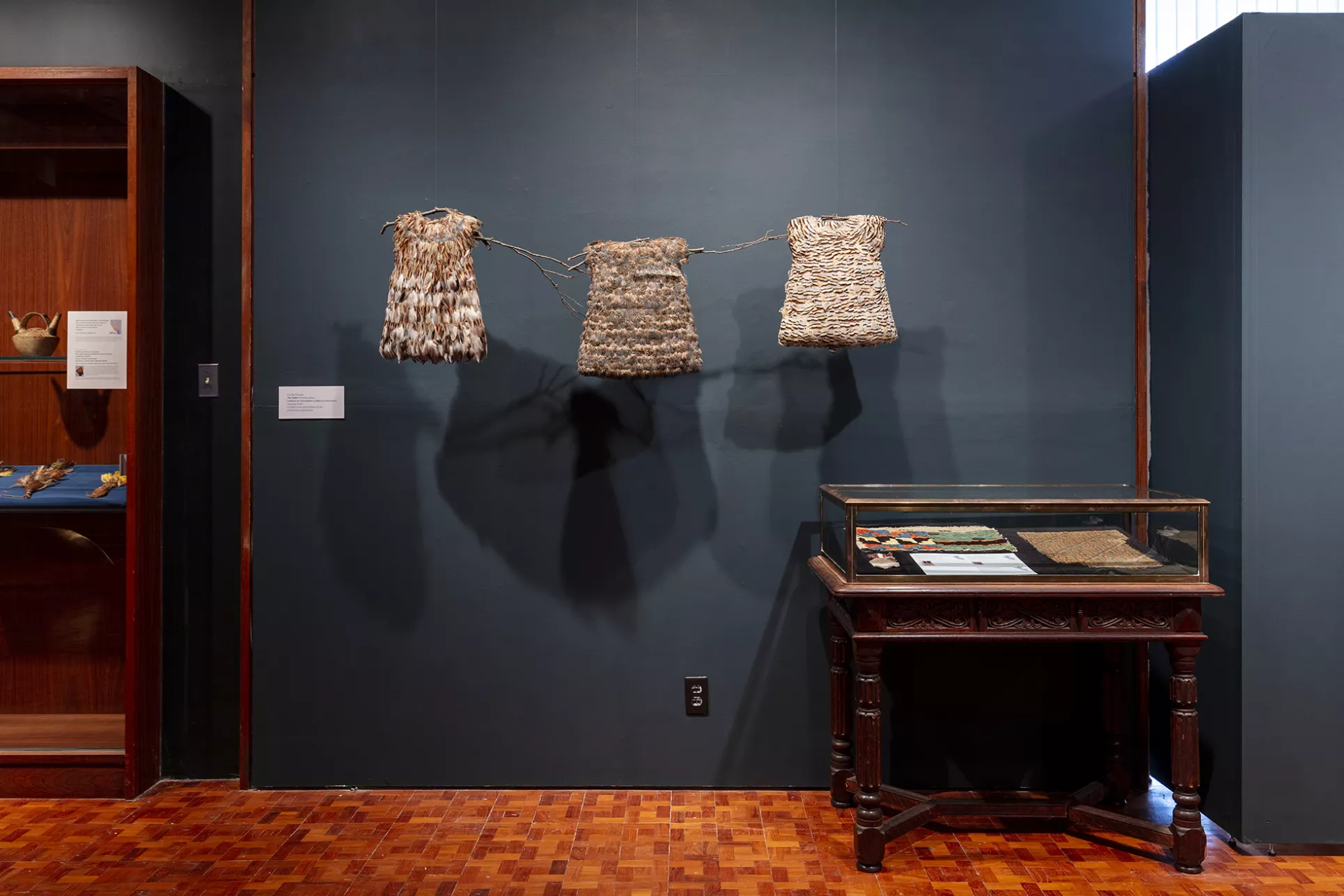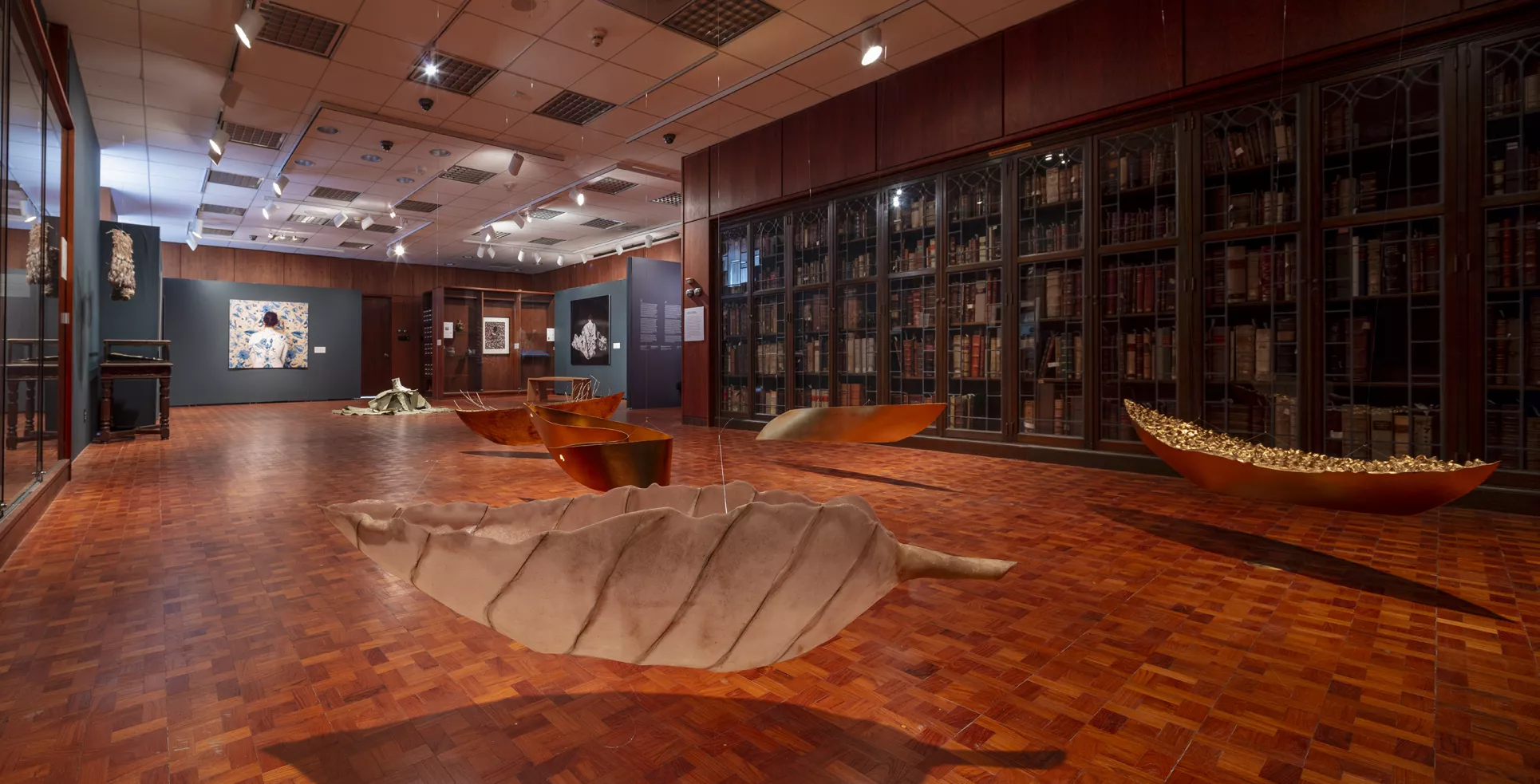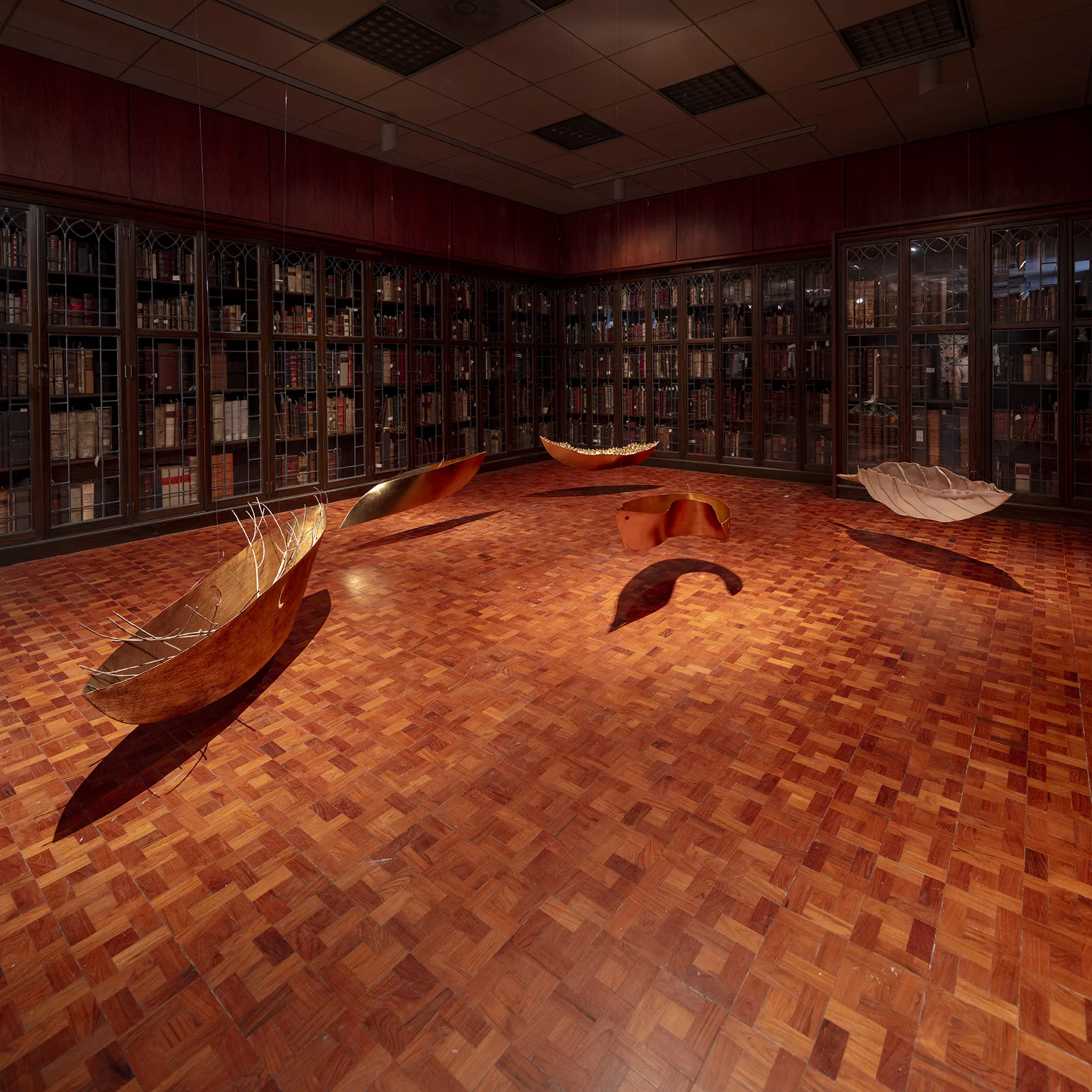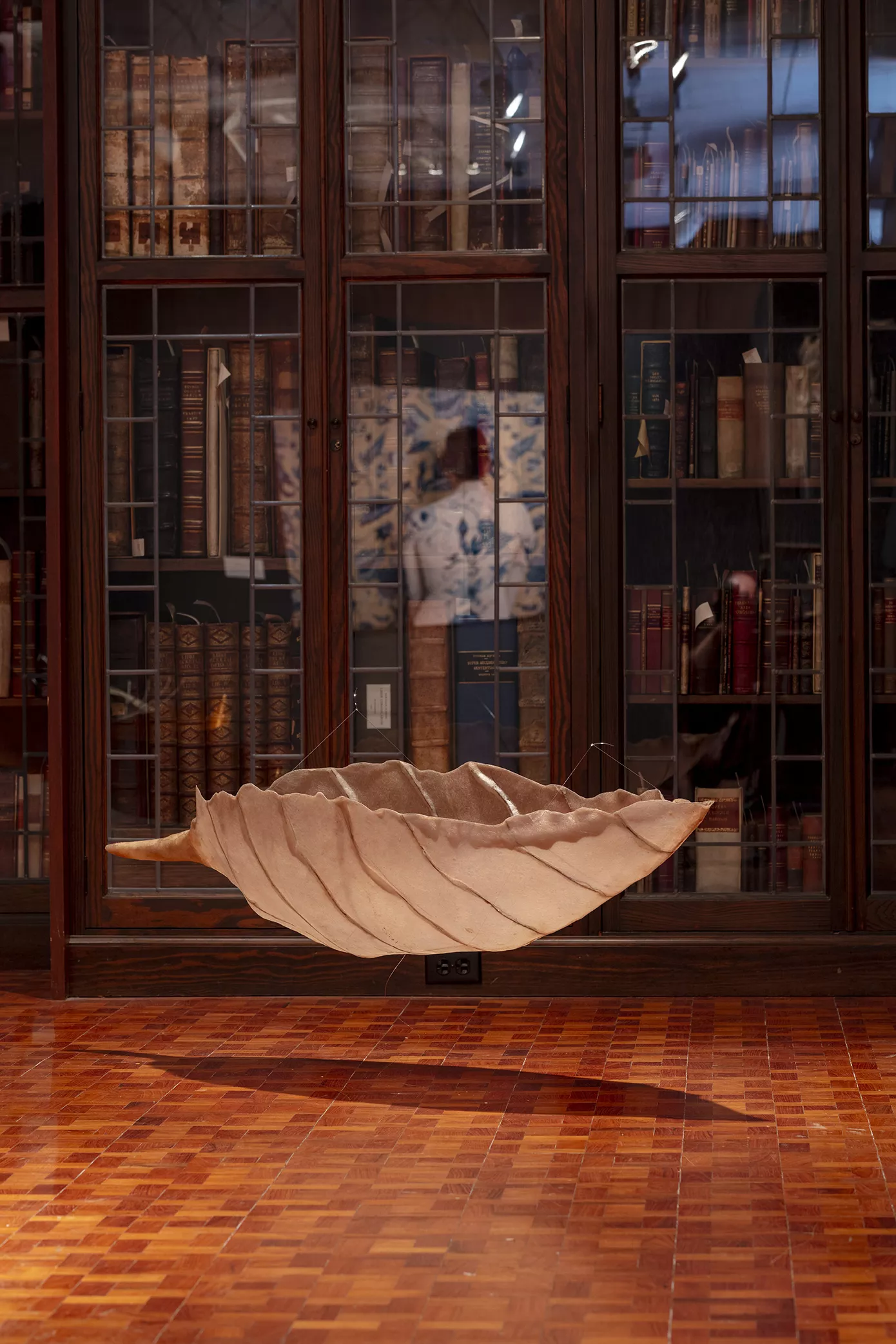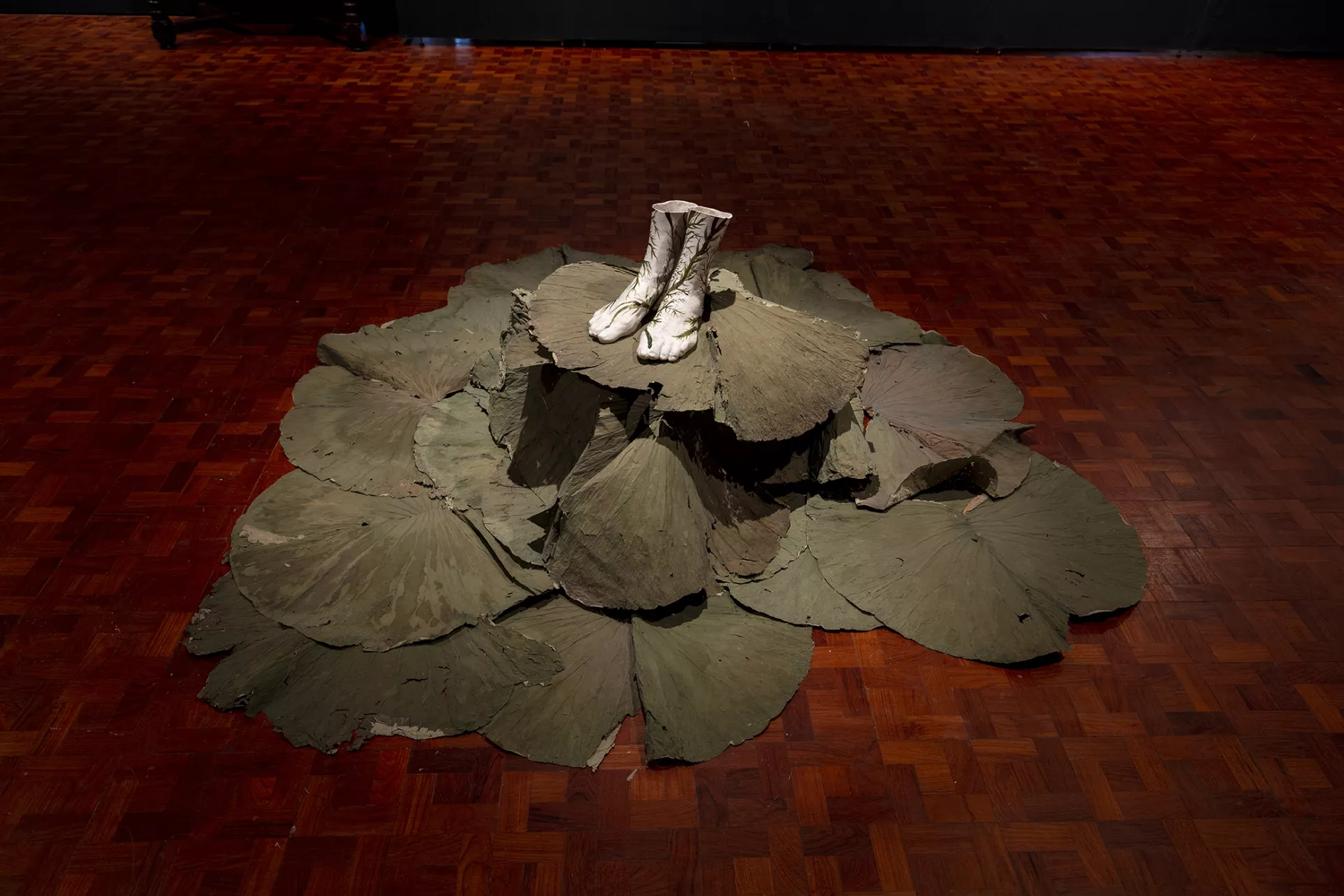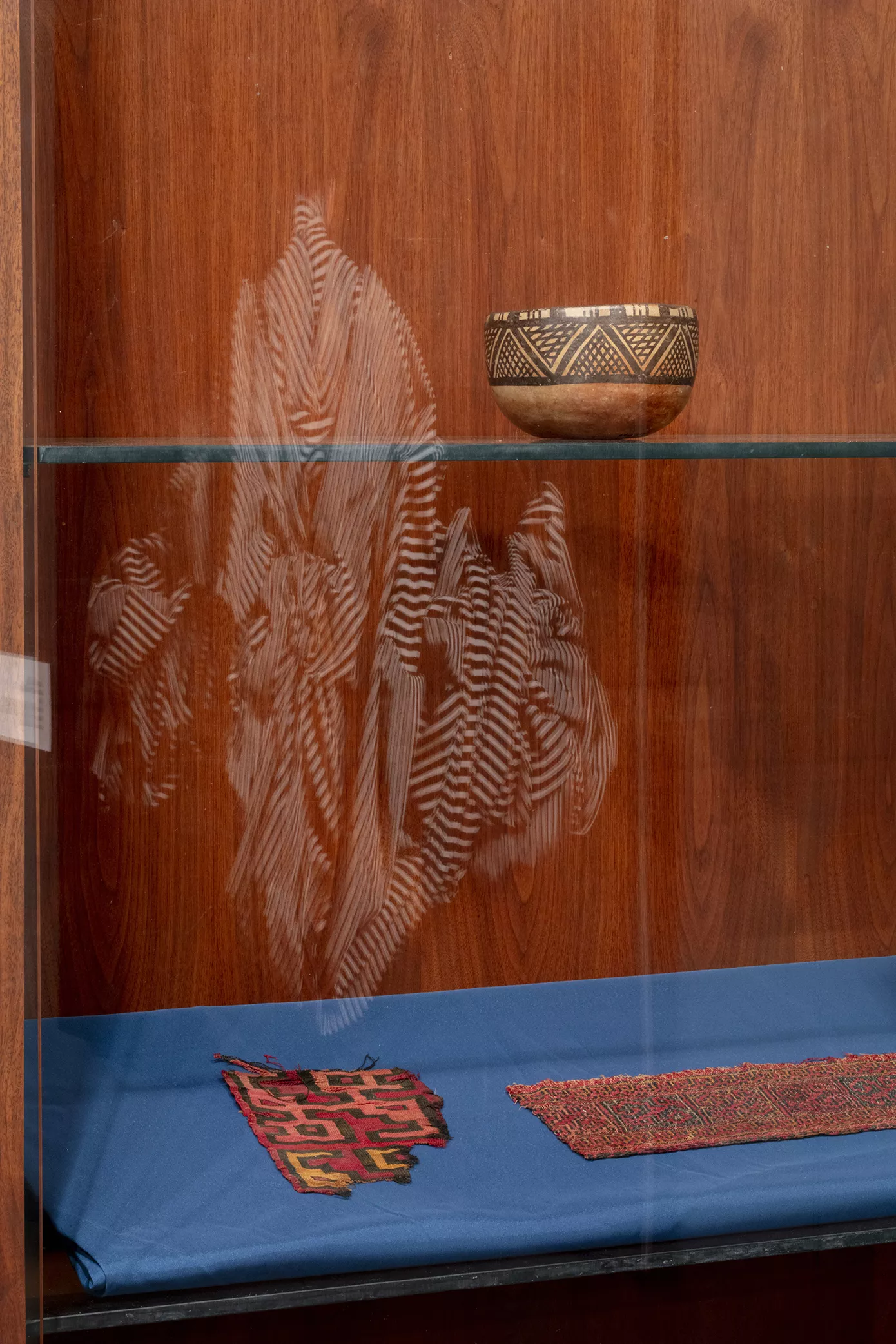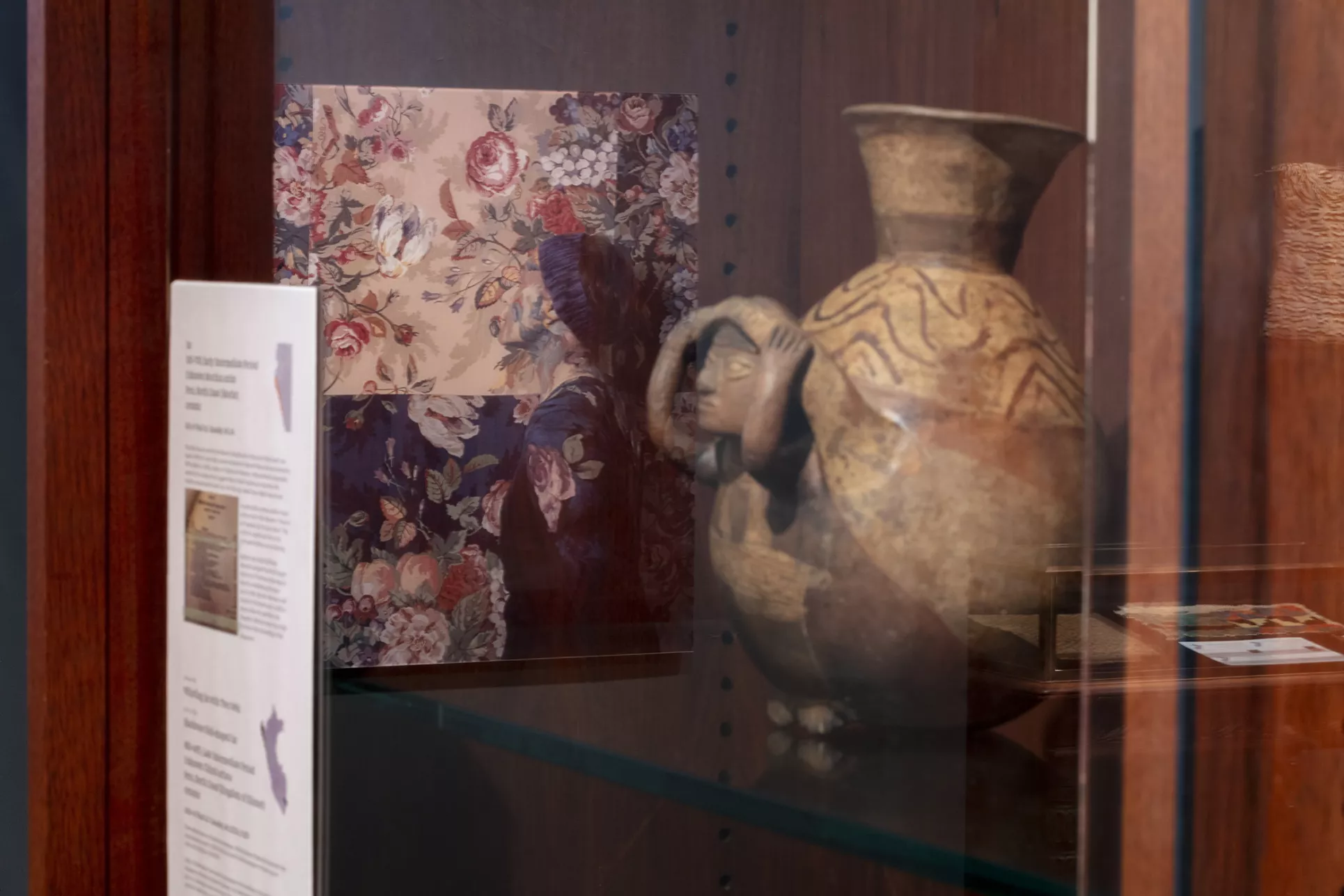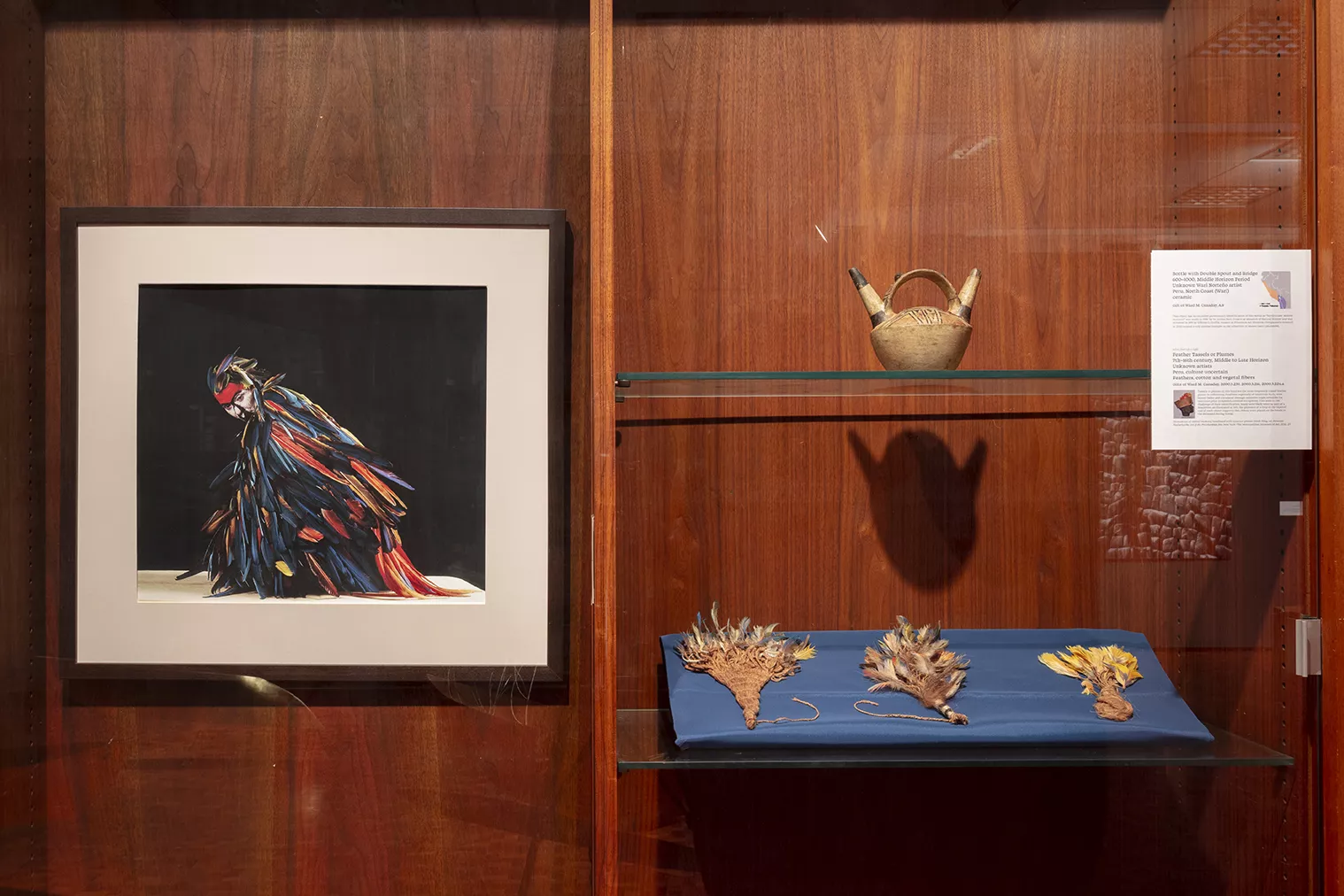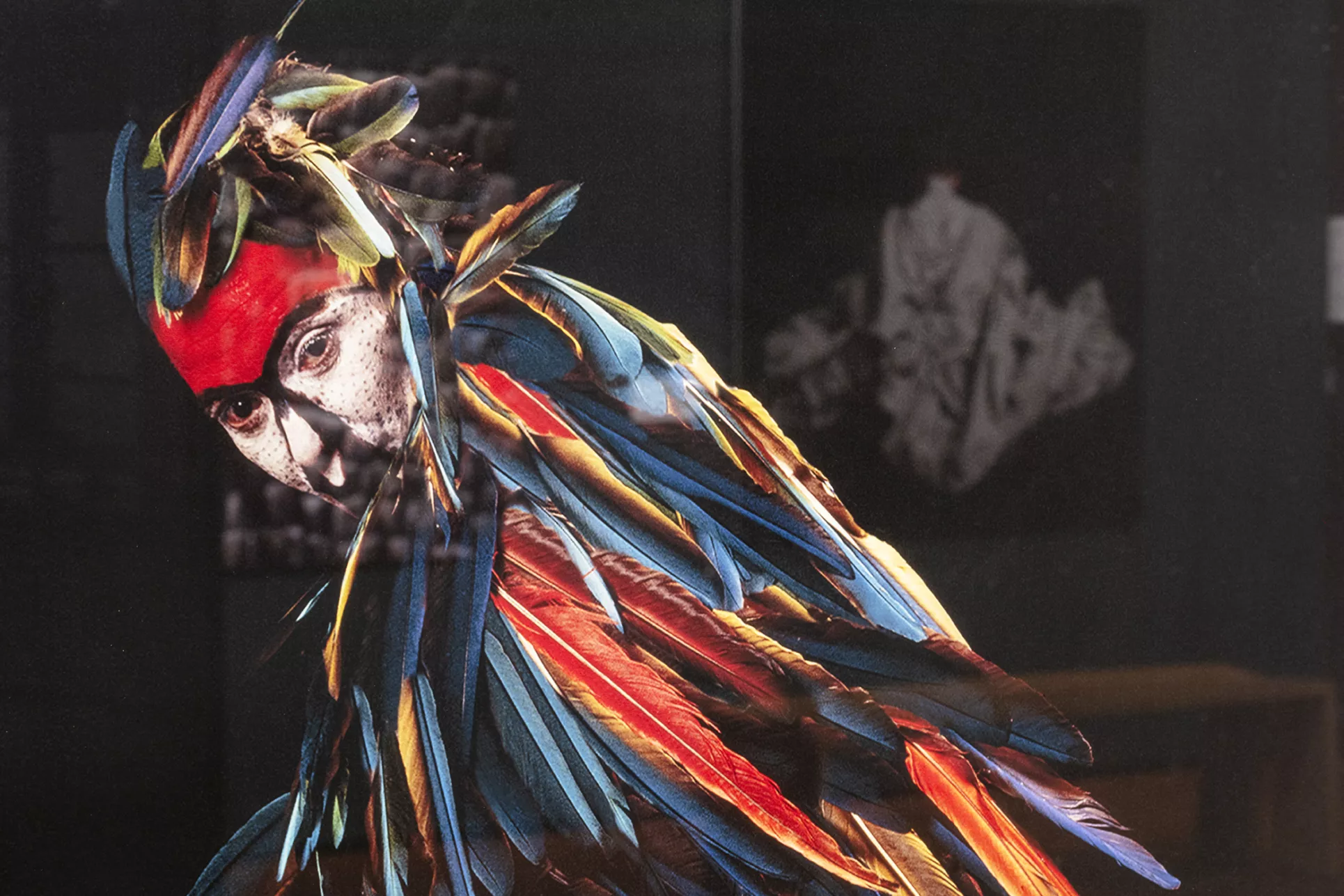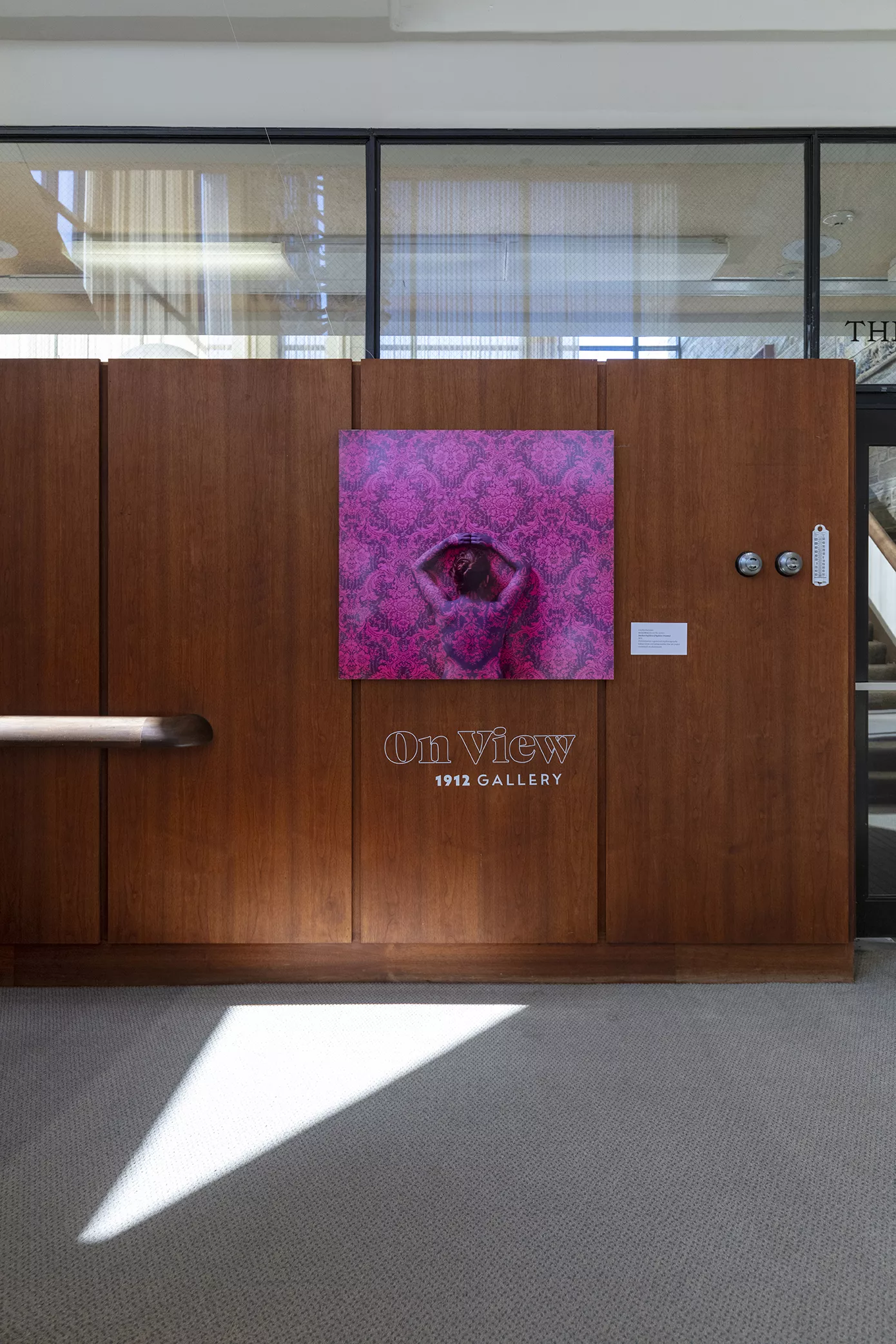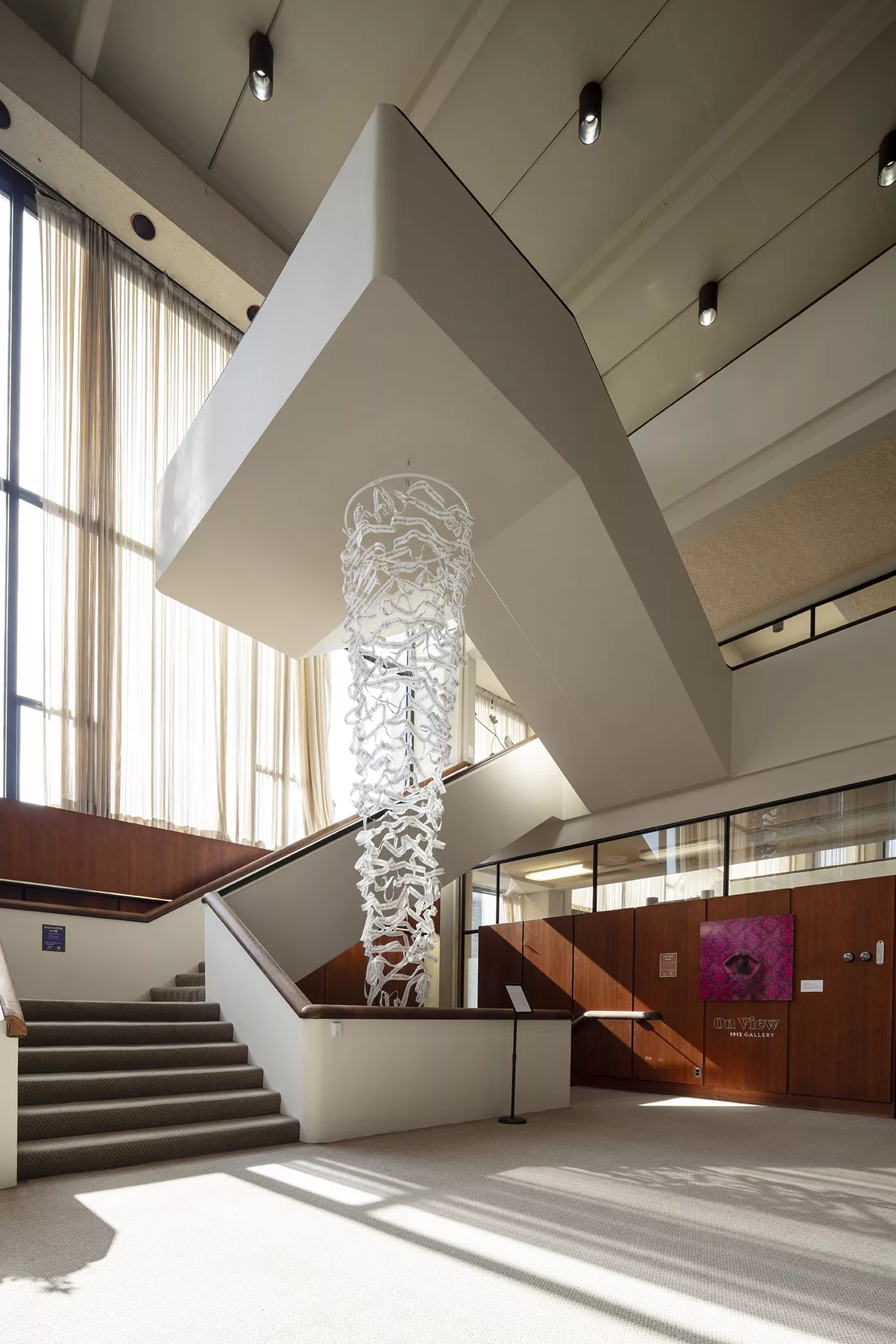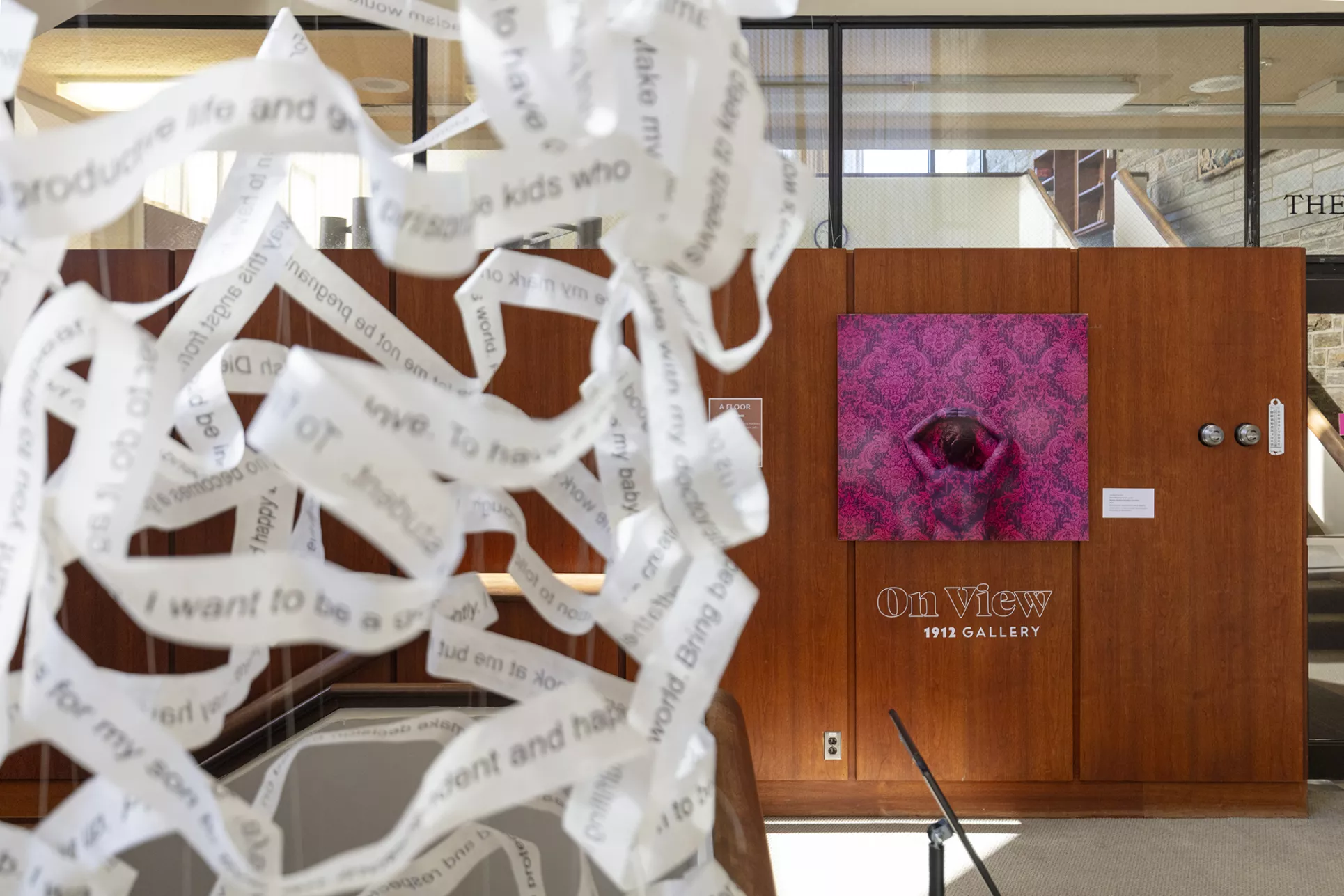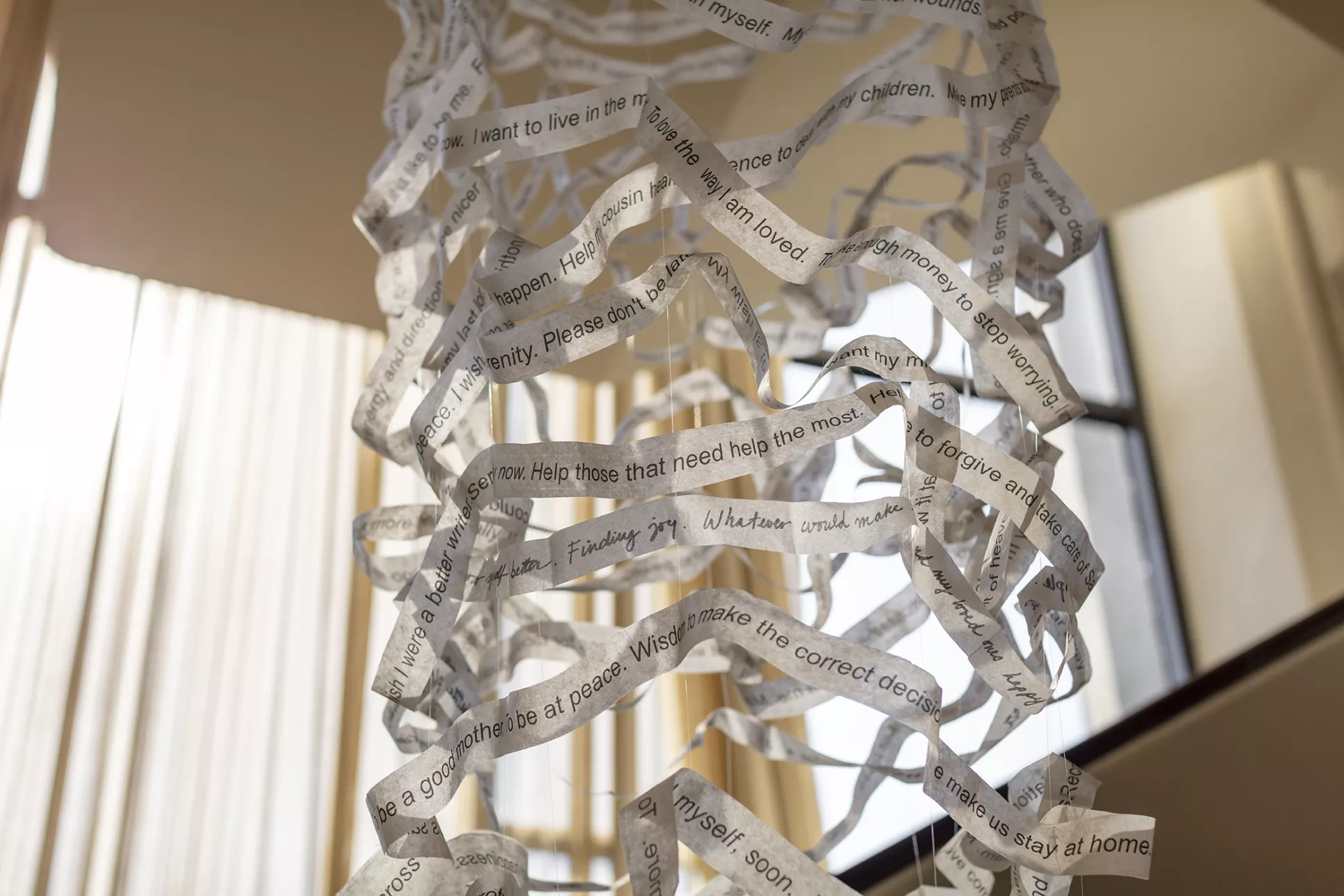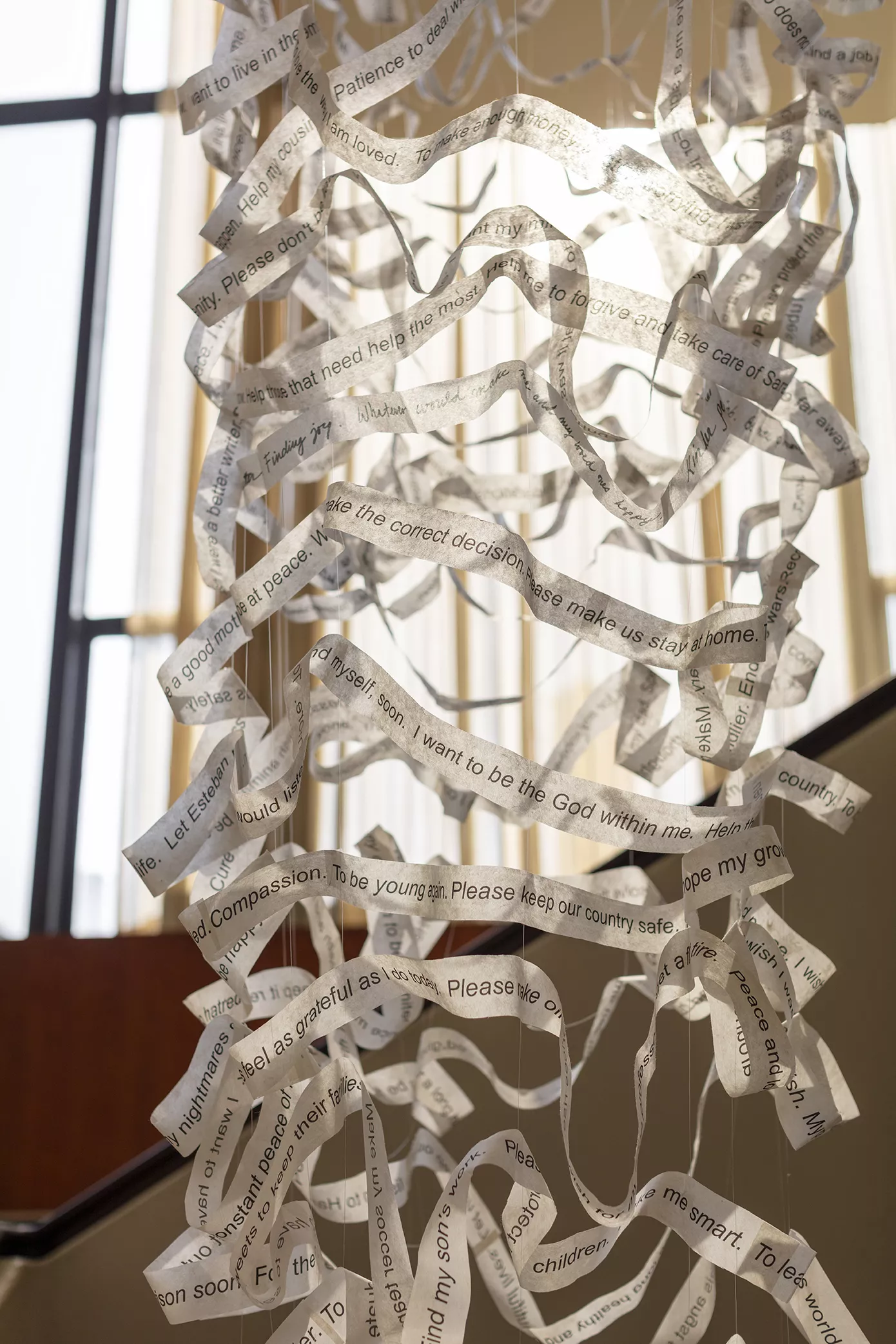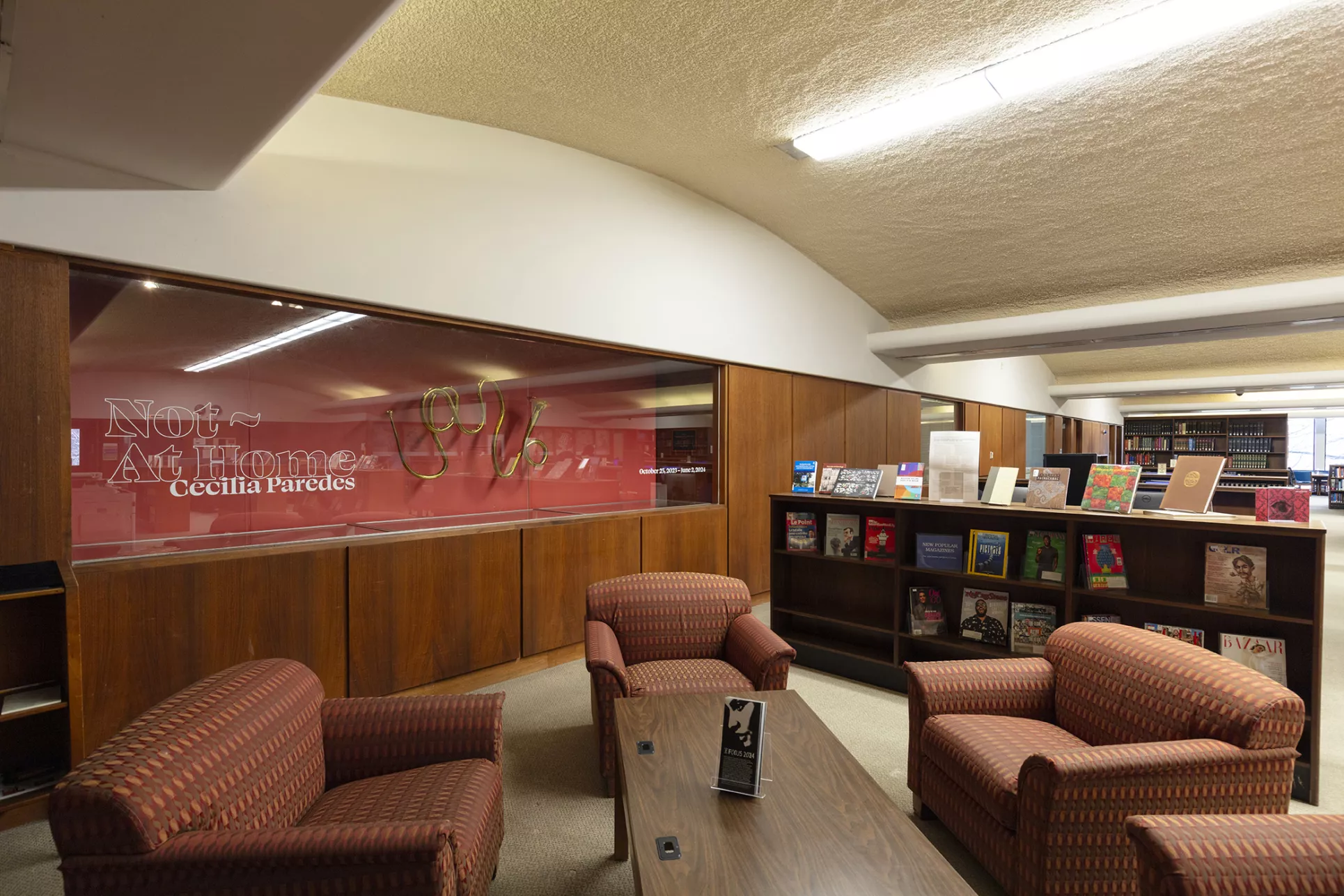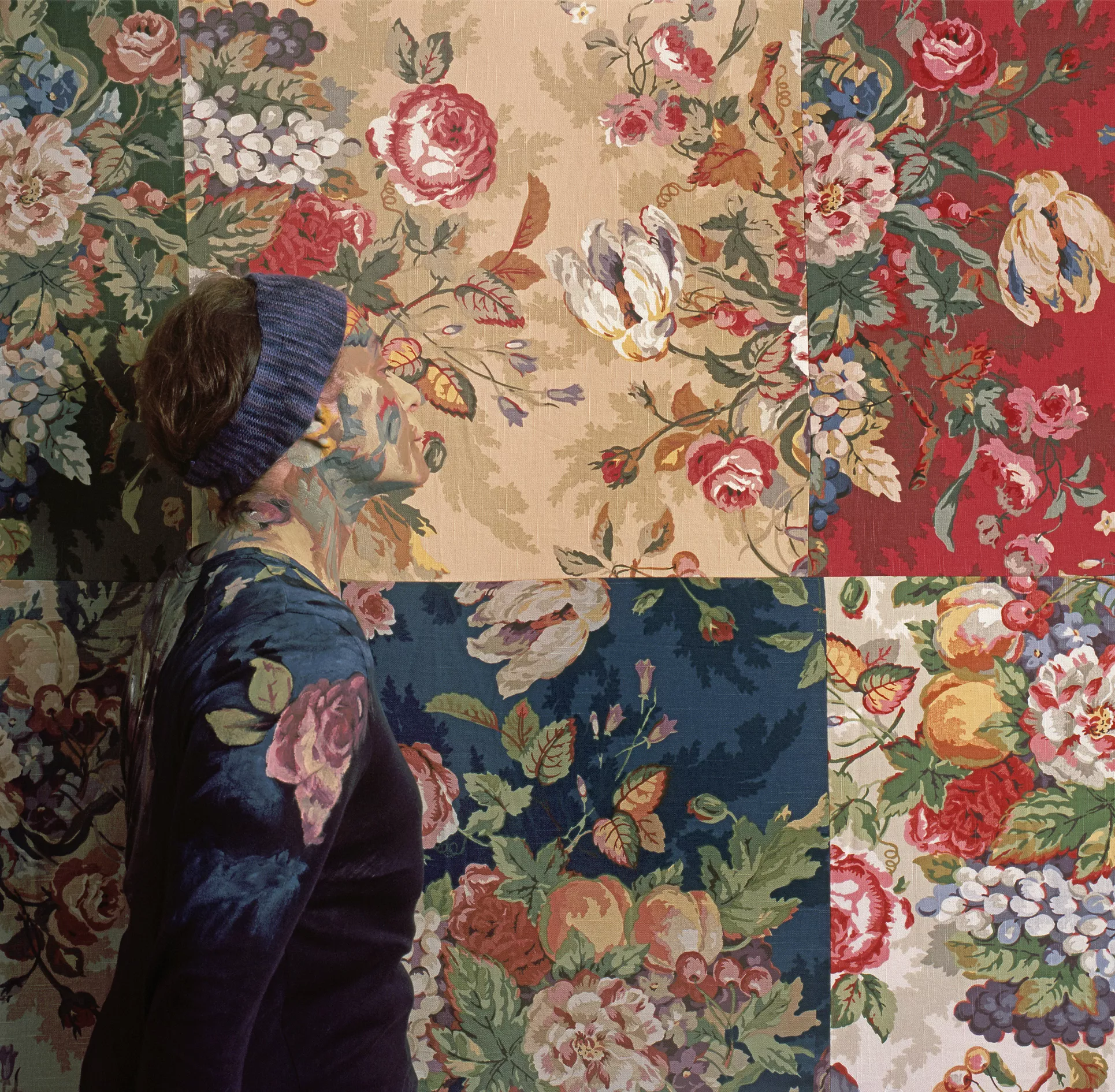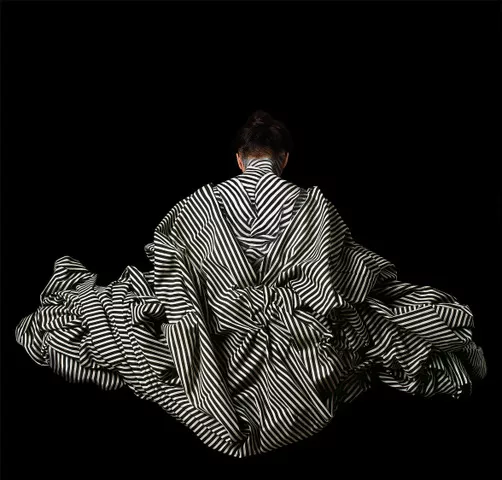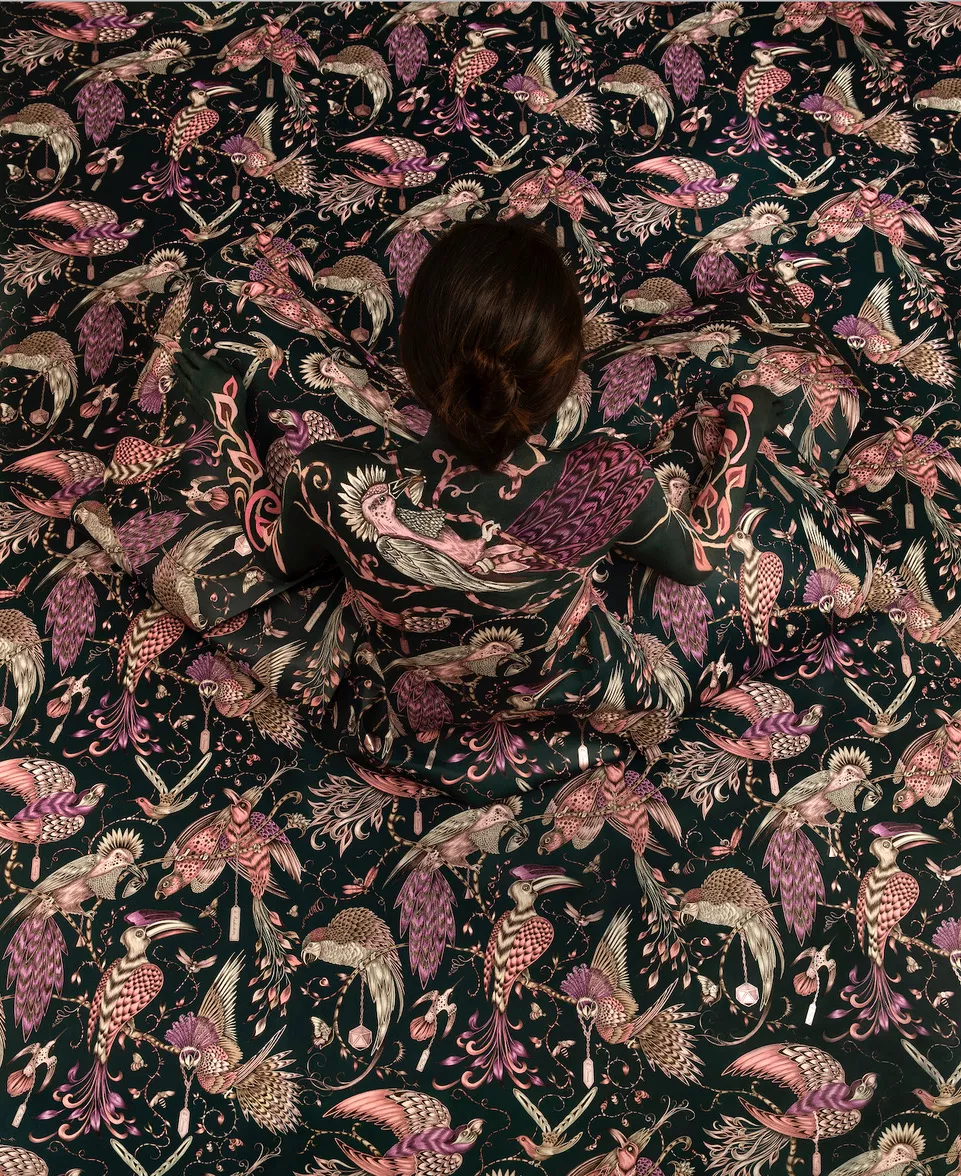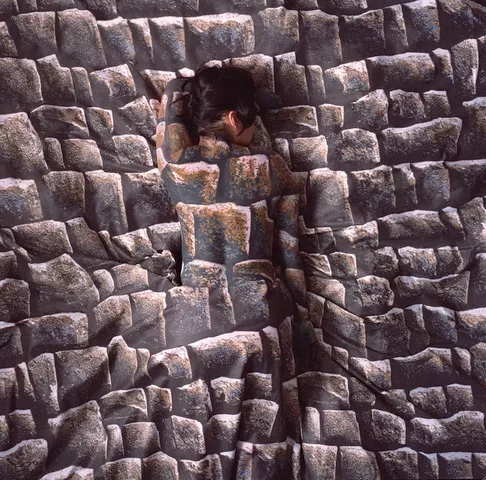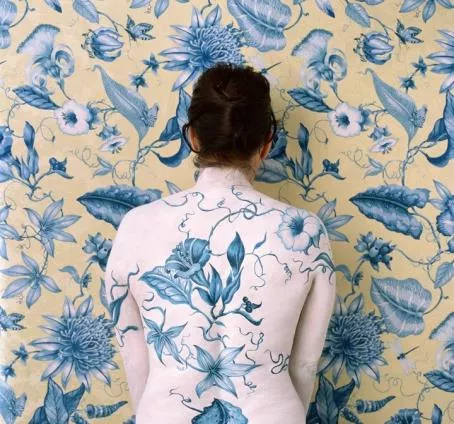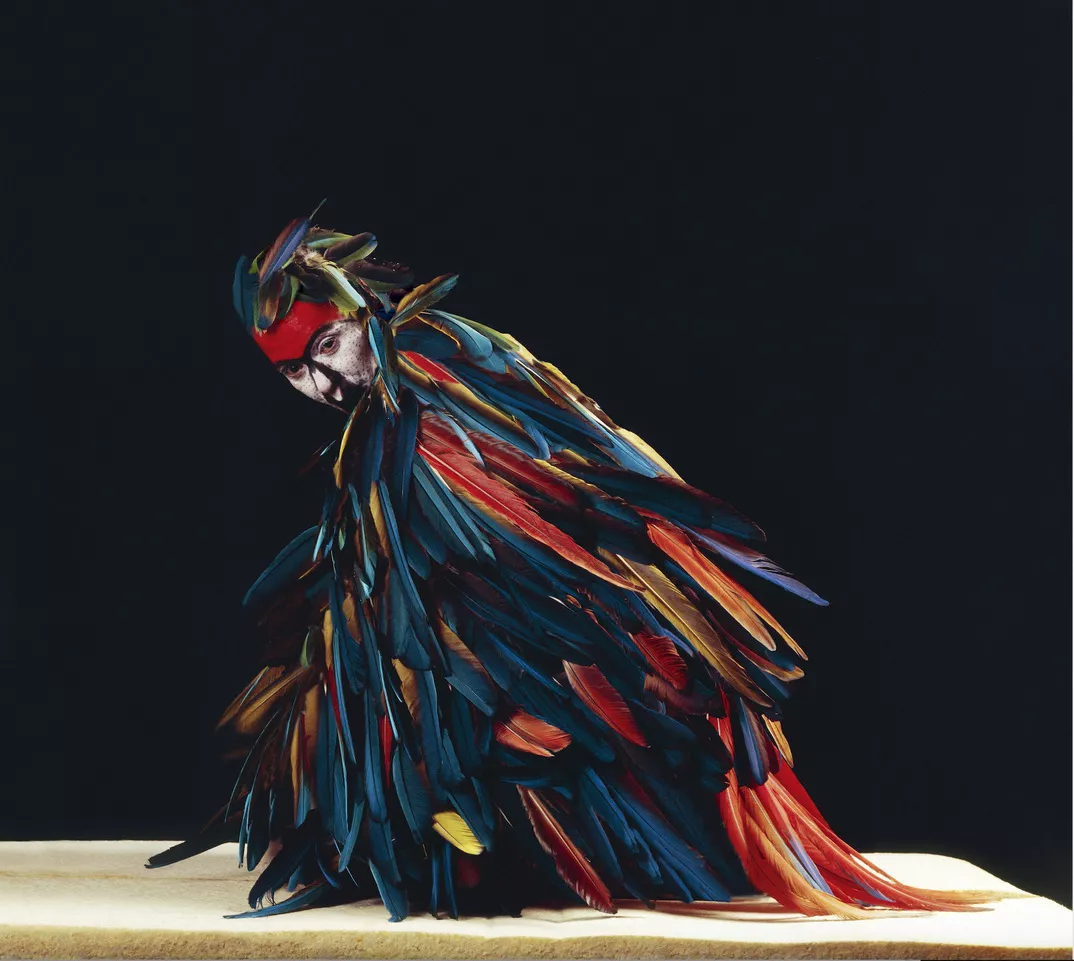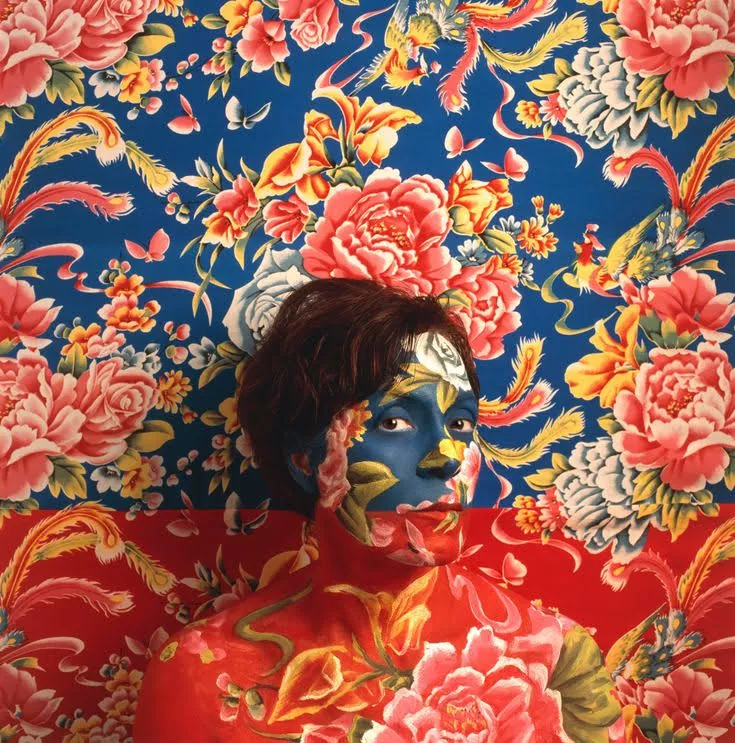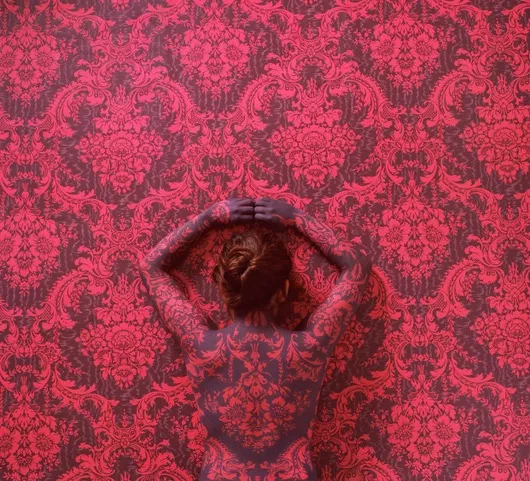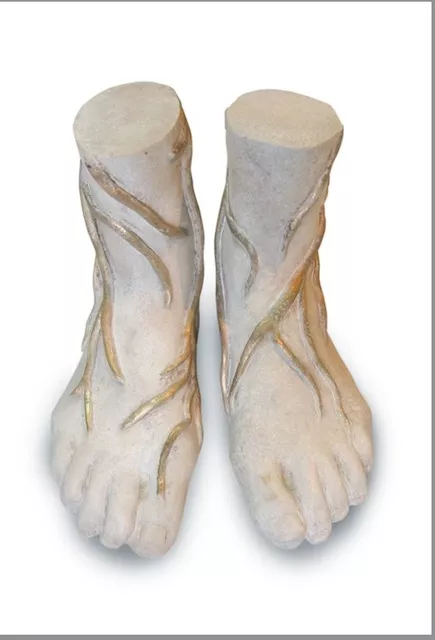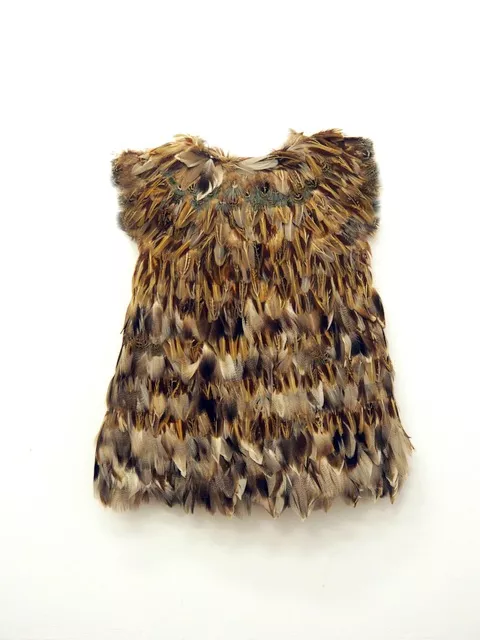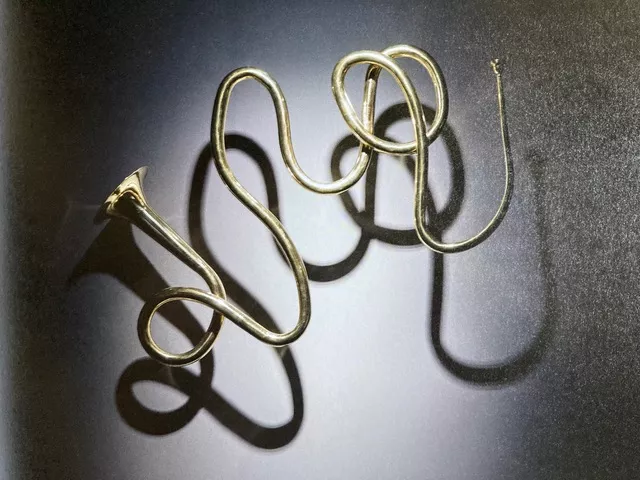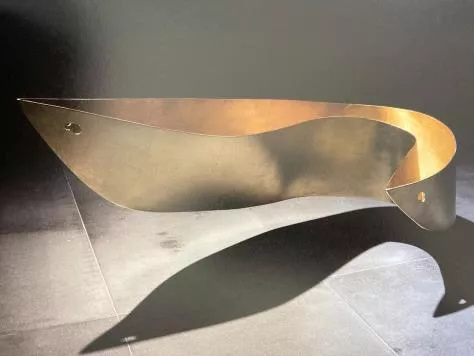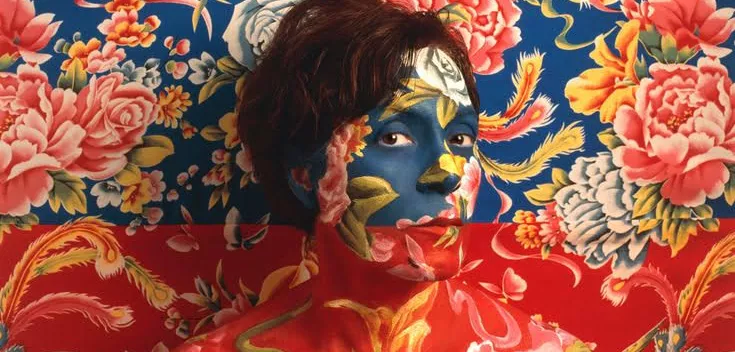
Not ~ At Home: Cecilia Paredes
October 25, 2023–June 2, 2024
1912 Gallery
Special Collections, Bryn Mawr College
1st floor of Canaday Library
Peruvian-born, Philadelphia-based artist Cecilia Paredes (b. 1950) makes photographs and sculptures that reflect her lived experience of diaspora. Sueños Fugitivos (Fugitive Dreams), a series of photographs begun in 2005, registers meticulously-crafted performances for the camera. For these “photo-performances,” her skin is painted to match the ornate, floral patterns of fabrics that she sources from markets around the world. This chameleon effect confuses flesh with fabric and expresses her sense of identity as something that shifts according to her surroundings.
Flattened as if part of a wallpapered domestic space, Paredes also contends with an experience of gender in which women’s bodies, fertility, and labor are tamed to satisfy patriarchal demands. She merges flower painting, one of few creative outlets historically available to women, with a radical kind of cosmetics to refuse taming, capture, or categorization.
Paredes’ sculptures include gilded canoes whose bows reroute their direction; a sinuous trumpet that inhibits its own music; and disembodied feet. In the turnaround, stilling, and tangling of these objects, they question Western logics of progress and ask us to acknowledge the limits of intelligibility. Such rethinking is perhaps nowhere more necessary than in the institutional spaces of libraries and museums, inheritors of Enlightenment standards of acquisition and categorization as the pathways to knowledge—logics that likely compelled the collection of artifacts also included in this exhibition. Thinking with Paredes’s objects as conceptual frameworks, how might we turn back and around?
Paredes understands her diasporic sense of identity as an experience in relation to her surrounding environment. At Bryn Mawr College, she was open to juxtaposing her artwork with some Peruvian special collections. For the curators, this provided an opportunity to revisit the context of how these artifacts came to the College and to think through the ethical challenges of best practices in caring for these objects and their various communities: how do we responsibly steward materials when a relationship with the artist is not possible, when there are no records of their makers or even their places of origin?
Between 1964 and 1966, nearly 1,000 Peruvian objects were donated to the College’s department of anthropology. All were the gift of a single collector, Ward M. Canaday (1885- 1976). Little is known about the objects’ sites of excavation or the conditions under which they were acquired, but it is likely that most of them come from burial sites. How should the excavated funerary materials of another culture be cared for in the institutions that now house them? Where is the most appropriate home for such materials? And how do we begin conversations about repatriation with so little information about where something comes from or who made it?
Join us for a series of Friday Finds programs exploring Paredes’s work, questions of cultural property and repatriation, and ongoing research into the collections. Read more on what is known about these artifacts and their donor, and explore the materials recommended in the reading area just outside the gallery.
Curators
Emily Alesandrini, PhD student, History of Art
Carrie Robbins, PhD, Curator/Academic Liaison of Art & Artifacts
Program coordinator
Joselyn Garcia, MA student, History of Art
Graphic design
Nathanael Roesch
Installation team
Flannel & Hammer of Philadelphia
All exhibitions and events in Special Collections are supported by the Friends of the Bryn Mawr College Libraries.
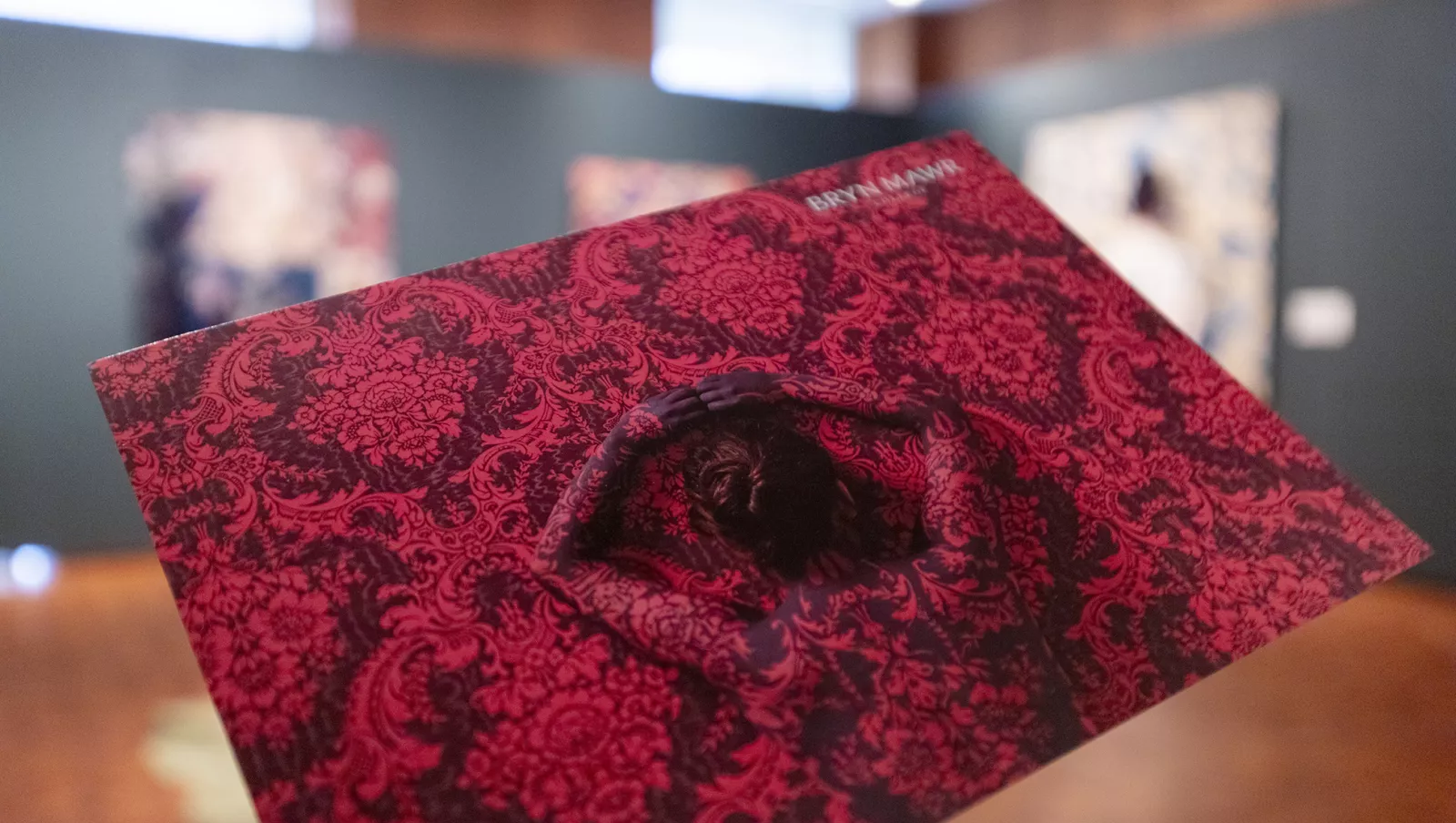
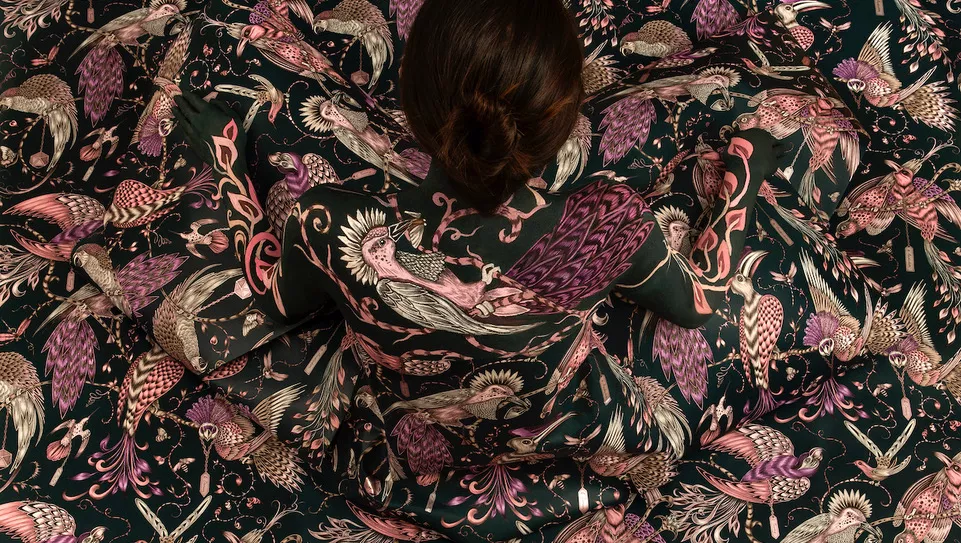
Checklist of Special Collections in the Exhibition
"the acquisition of material hostages"
Peruvian Archaeological Materials in Special Collections
The Gifts of Ward M. Canaday (1885-1976)
Ward M. Canaday was the collector and donor of the majority of Peruvian archaeological artifacts in special collections. He was also husband of Mariam Coffin Canaday (Class of 1906) and father of Doreen Canaday Spitzer (Class of 1936).
"All my life, I think, I have been moved toward those things which seem to satisfy a spiritual rather than a physical ideal – the satisfactions which come from the harmonies of life such as music and color, light and freedom – those harmonies which unlock expression... . These past several years I have found evolving inside me a conviction that these harmonies of life will become realities if I can get hold of them somehow through the acquisition of material hostages. Probably I am more surprised than anyone else at the development of material position and possessions which has grown out of the past few years. Perhaps I more than anyone else am puzzled as to the proper uses of such material powers if such they be. Yet I go on driving with the current, retaining always that inner and overwhelming certainty that the harmonies which I prize as the goal of life are in some way to be unlocked by this material key."
- January 1925 letter from Canaday to his wife
Biography of the acquirer
Self-described as a child raised in poverty, Canaday attends Harvard University and then pursues advertising positions at multiple companies, including in 1916 as department head for Willys-Overland Motor Company in Toledo, Ohio. By 1925, he establishes his own firm and manages their $2 million ad account among others. That same year, he breaks ground on a massive family estate in Ottawa Hills, OH and begins worldwide collecting efforts to decorate it. His brother describes Canaday’s interests after 1925 as shifting from “advertising techniques to the pursuit of money," as well as clout and power:
he arranges for the American Ambassador to present Charles Lindbergh with a complimentary car on his arrival to Paris; he helps raise funds for the Toledo Museum of Art's archaeological dig at Seleucia on Tigris (Iraq); he consults with the Greek government about how to promote tourism; he buys tax-free land on St. Croix (Virgin Islands) and becomes the largest grower of sugarcane on the island; President Roosevelt asks him to be director of public relations for the Federal Housing Administration (1934-35); he becomes Chairman of the Board at Willys-Overland; he joins the board of the American School of Classical Studies in Athens, where his daughter studies.
As head of Willys-Overland Motor Company in 1939, Canaday anticipates that the company’s growth will be in war-related stock. The company develops the Jeep prototype for the U.S. military in 1940 and produces more than $760 million in military equipment over the next five years. When Canaday sells Willys-Overland to Kaiser-Frazer Manufacturing Corporation in 1953, Canaday is “comfortably afloat on a sea of cash and securities in eight figures” in his daughter’s assessment.
Donating acquisitions
In 1964, Bryn Mawr College’s president Katherine McBride approaches Canaday and his wife Mariam (Class of 1906) for funds to support a new auditorium and museum of art and archaeology. That year, Canaday donates the first of three allotments of Peruvian materials to the College’s anthropology department. This would amount to almost 1,000 Peruvian artifacts in all. McBride revises her request for funds to support a new campus library. The Canadays give $1 million, and the library is dedicated as The Mariam Coffin Canaday Library at Bryn Mawr College in April of 1970.
"The house would become full of material hostages – some of which never even got into the house. I can hear Mother saying, 'Don’t buy that, Ward. You’ll never do anything with it and it will just molder in storage for the next fifty years.' She was right, too."
- Doreen Canaday Spitzer (Class of 1936), in her biography of her parents, by one and one
Peruvian material hostages
How Canaday came to possess the Peruvian materials now housed in special collections at Bryn Mawr College is not known. There is documentation that this question was asked – not only by Frederica de Laguna, when the materials entered the anthropology department’s collection, but also by Carol Campbell, curator when the materials were transferred into special collections. No answers came; his wife and daughter seem to be unaware of the acquisitions. Undocumented excavation of Peruvian archaeological sites is unfortunately quite common. Many of these materials enter the art market without provenience. It is likely that the specific origins of the materials Canaday collected are similarly lost.
Research, however, continues in special collections. Did Canaday purchase these materials on the art market, in Peru? Did he have an acquaintance with Rafael Larco Hoyle and the Museo Larco in Peru? What is known: Canaday had business correspondence with the government of Peru in 1940 during development of the Jeep prototype; his vacations arranged by the American Express Company during the 1950s and 1960s included one to Peru; he hired Junius Bird, Curator of South American Archaeology at the American Museum of Natural History to appraise the collection (1958-1961).
What else can be learned? What other questions should be asked? What is the best way to care for materials that are not at home here?
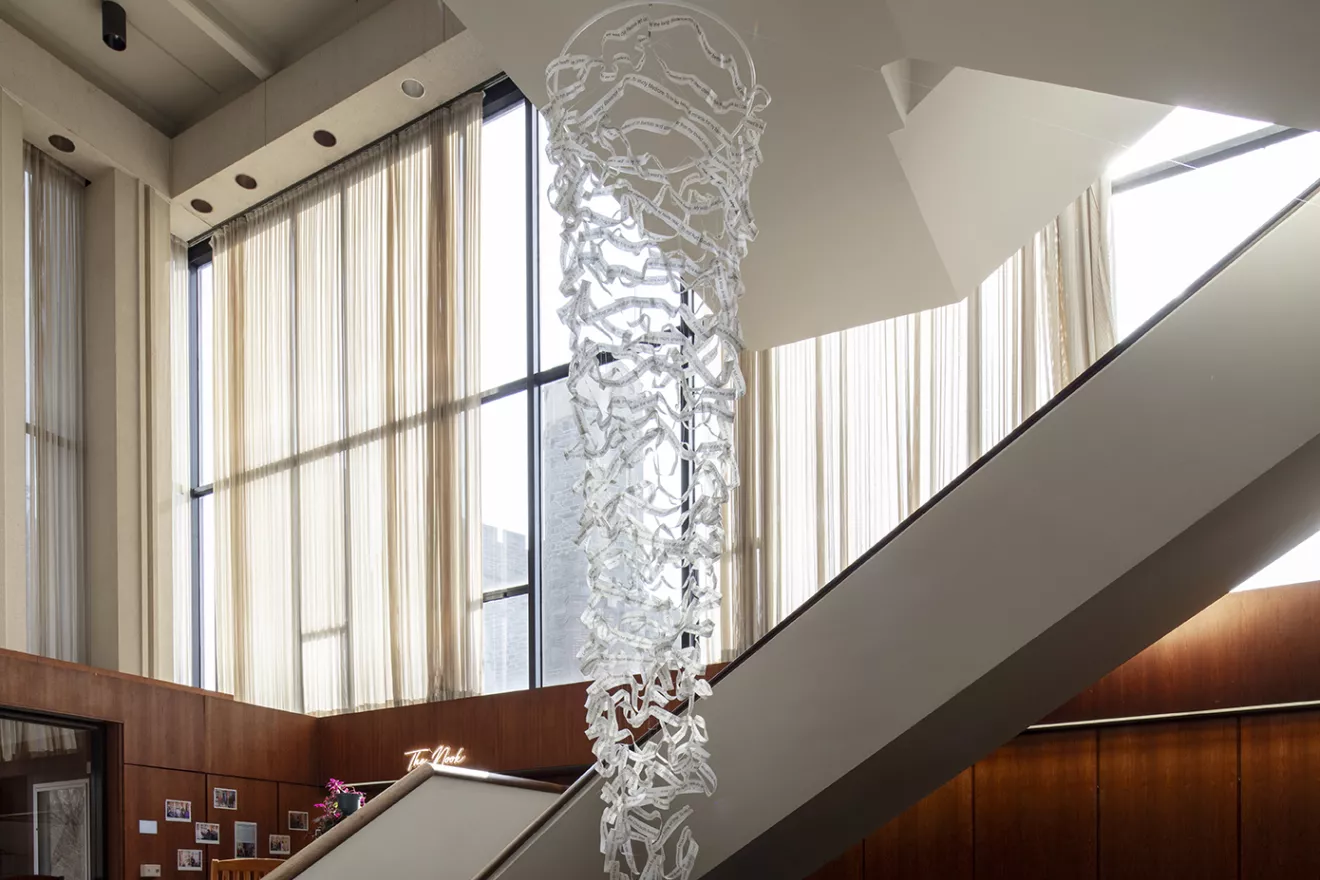
Wishes in the Air
Wishes in the Air (2024, Bryn Mawr College)
Printed ink on Japanese paper
Measurements variable.
"The wonderful lesson we learn as we read the wishes is that we have a constant as human beings -- which is the need for tenderness, compassion, good health, love, and peace." - Cecilia Paredes
In February 2024 Cecilia Paredes added one more artwork to the exhibition, Not ~ At Home: Cecilia Paredes (October 25, 2023 – June 2, 2024). Wishes in the Air is a collaborative piece that consists of wishes for the future collected from members of our campus community. These are interspersed with wishes that Paredes has collected when producing similar iterations of the piece around the world. Not only does the artwork include the words of our community, but it was made in situ with members of our community.
Curator Note
Wishes in the Air hangs here as a reminder of the reparative collections work still to be done and with collective belief in hopeful possibilities for the future.
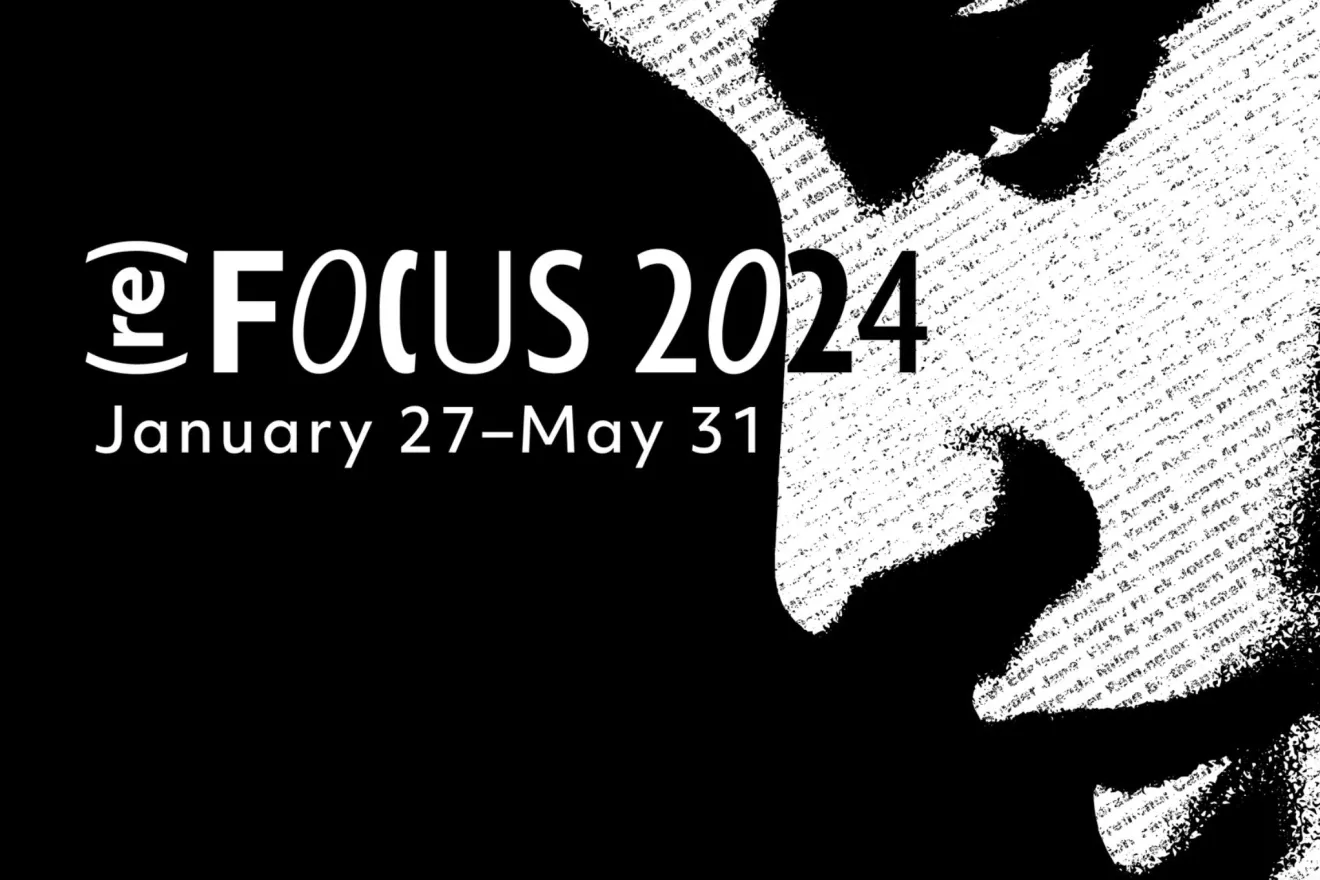
(re)FOCUS 2024
This exhibition is presented with (re)FOCUS, a Philadelphia festival recognizing women-identified and BIPOC artists through exhibitions, lectures, workshops, and more. Bryn Mawr College Special Collections joins over 60 visual arts organizations to celebrate the 50th anniversary of FOCUS (1974) and 50 years of feminism in the arts.
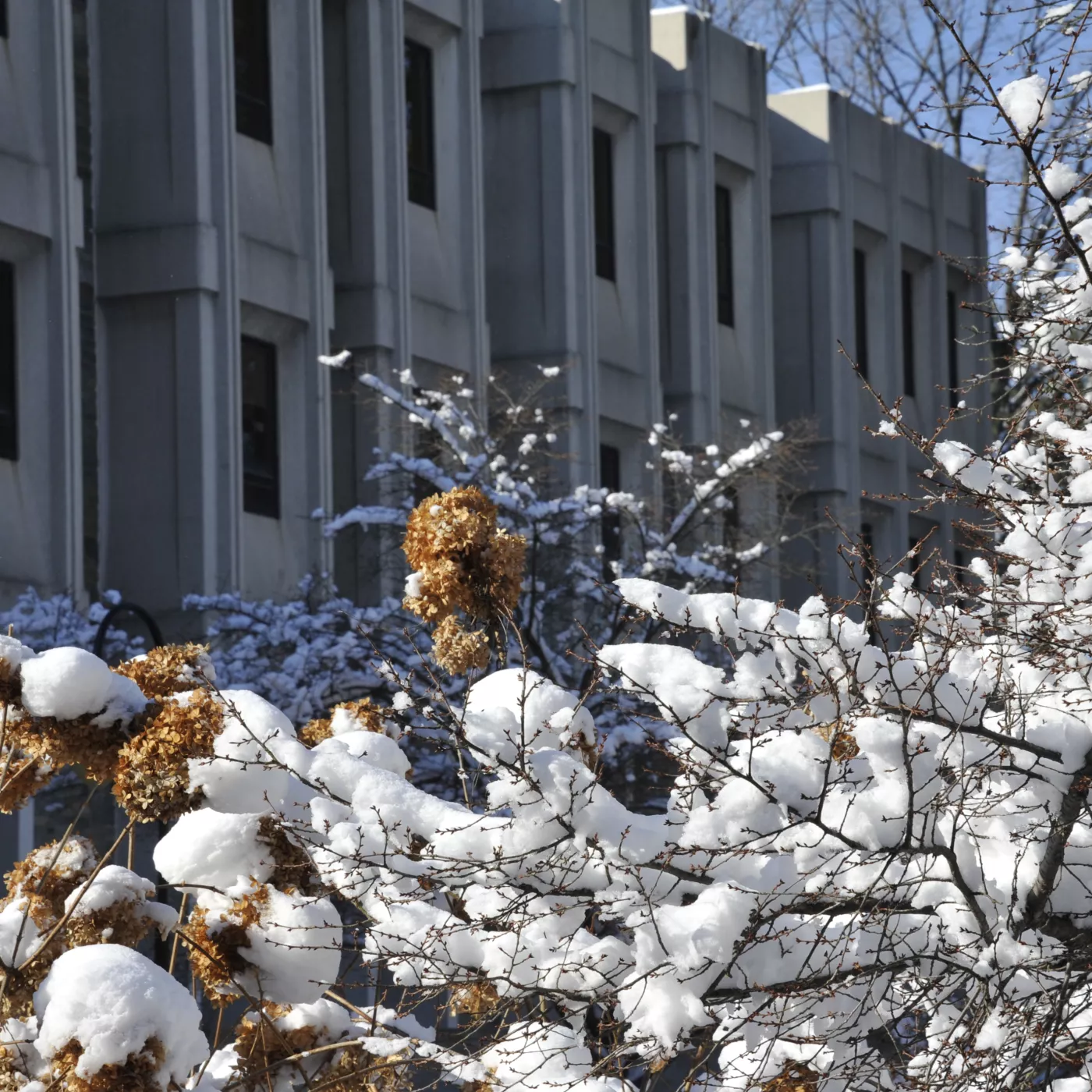
Contact Us
Library and Information Technology Services
Canaday Library
101 N Merion Ave
Bryn Mawr, Pennsylvania 19010
Office of the CIO:
610-526-5271
